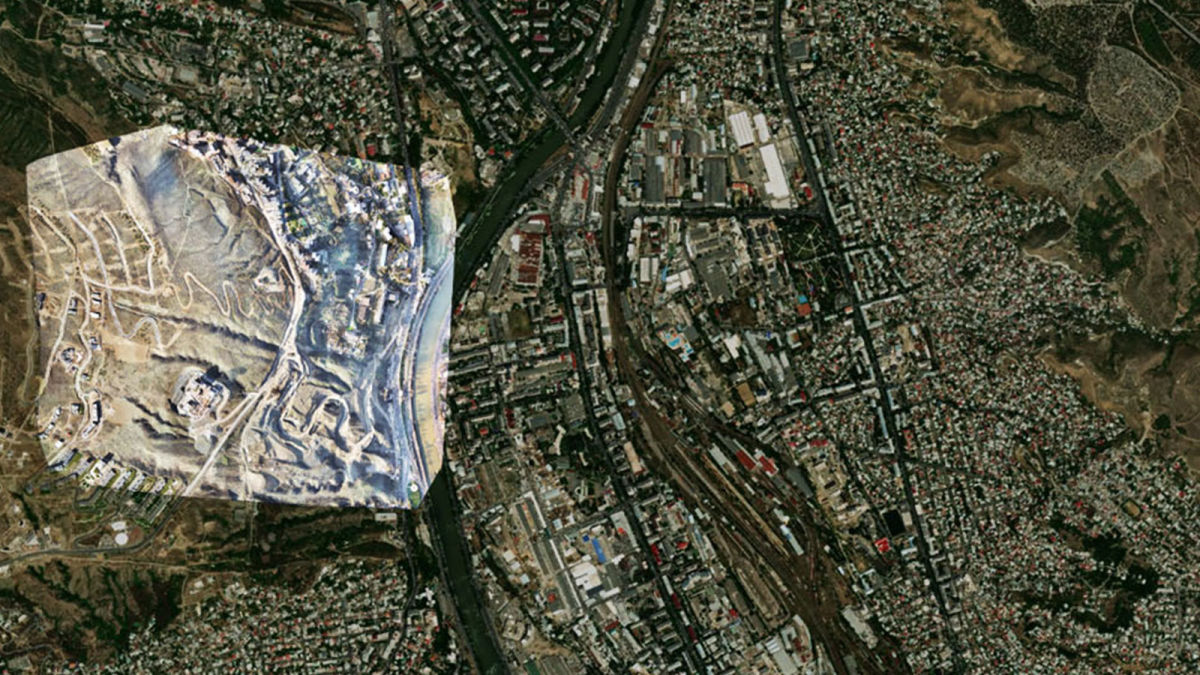Accurately mapping a landslide to make the right decisions
Geological hazards are often difficult to predict. When they happen, fast responses are required as well as adaptability by authorities to prevent loss of life or damage to infrastructure, property, and the local environment. Situational awareness is critical - and using drones for emergency response with specialized public safety software (such as PIX4Dreact for fast response or PIX4Dmapper for longer-term projects) can provide this information.
In March of 2021, a fissure opened on a hillside in the capital city of Georgia, Tbilisi. The fissure was near the suburb of Vashlijvari, above a road and buildings. With no initial record of the size of the fissure or awareness of the stability of the terrain, the local authorities needed to analyze and measure the crack as well as assess its likeliness to move. They needed a comprehensive view that did not create unnecessary risk. The National Environmental Agency of Georgia used drones and PIX4Dmapper, in collaboration with Tbilisi City Hall, to measure the area.
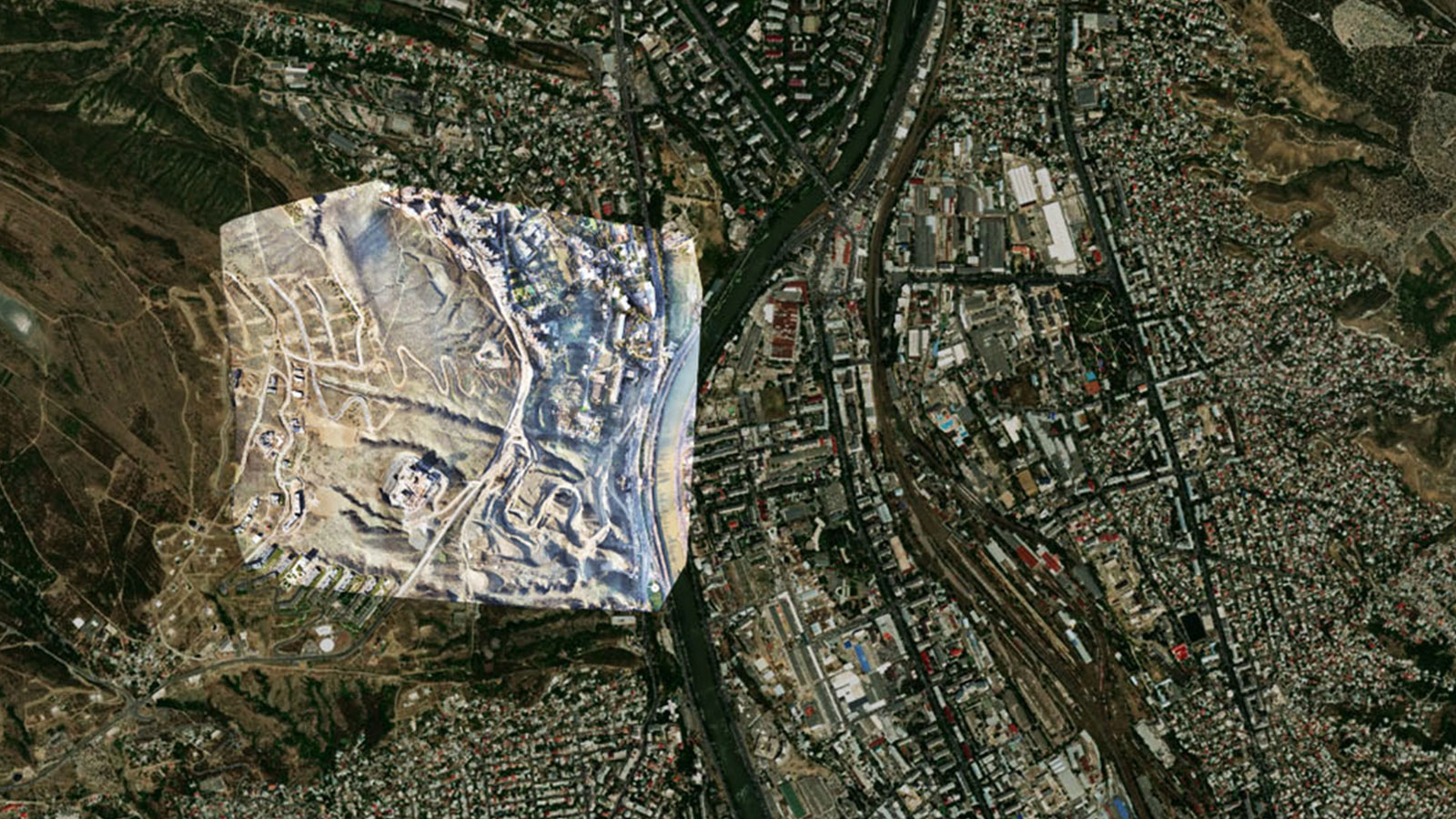
Project details
| Type of mission | Disaster management |
| Area surveyed | 2 523 km2 / 252 ha /623 ac |
| Hardware | eBee X Aeria X |
| Accuracy | 1.6 cm / 0.5 in |
| Processing | 1h 5 min, 2h 04 mins, DSM 23 min, Ortho 1h 20 |
| GSD | 0.67 cm |
| RTK/PPK? | Yes |
| Total images | 889 |
| Processing software | PIX4Dmapper |
| Processing time | 4h 30 |
| Location | Tbilisi (Georgia) |
| User | Georgia National Environmental Agency |
Benefits of drones in public safety
Drones as a tool for public safety are a proven asset - especially for geological hazards such as landslides, debris flows, avalanches, rock falls, and even more extreme events. Public safety operators have also used drones to map landslides for emergency response as well as planning protective measures.
In this case, drones were used because they could gather data about different parameters of the landslide. Thanks to photogrammetry, the team could analyze their findings with high accuracy as a result of using specialized mapping software and hardware. The fixed-wing eBee drone used here has a long flight time which enables it to gather a complete scene without having to return to change batteries.
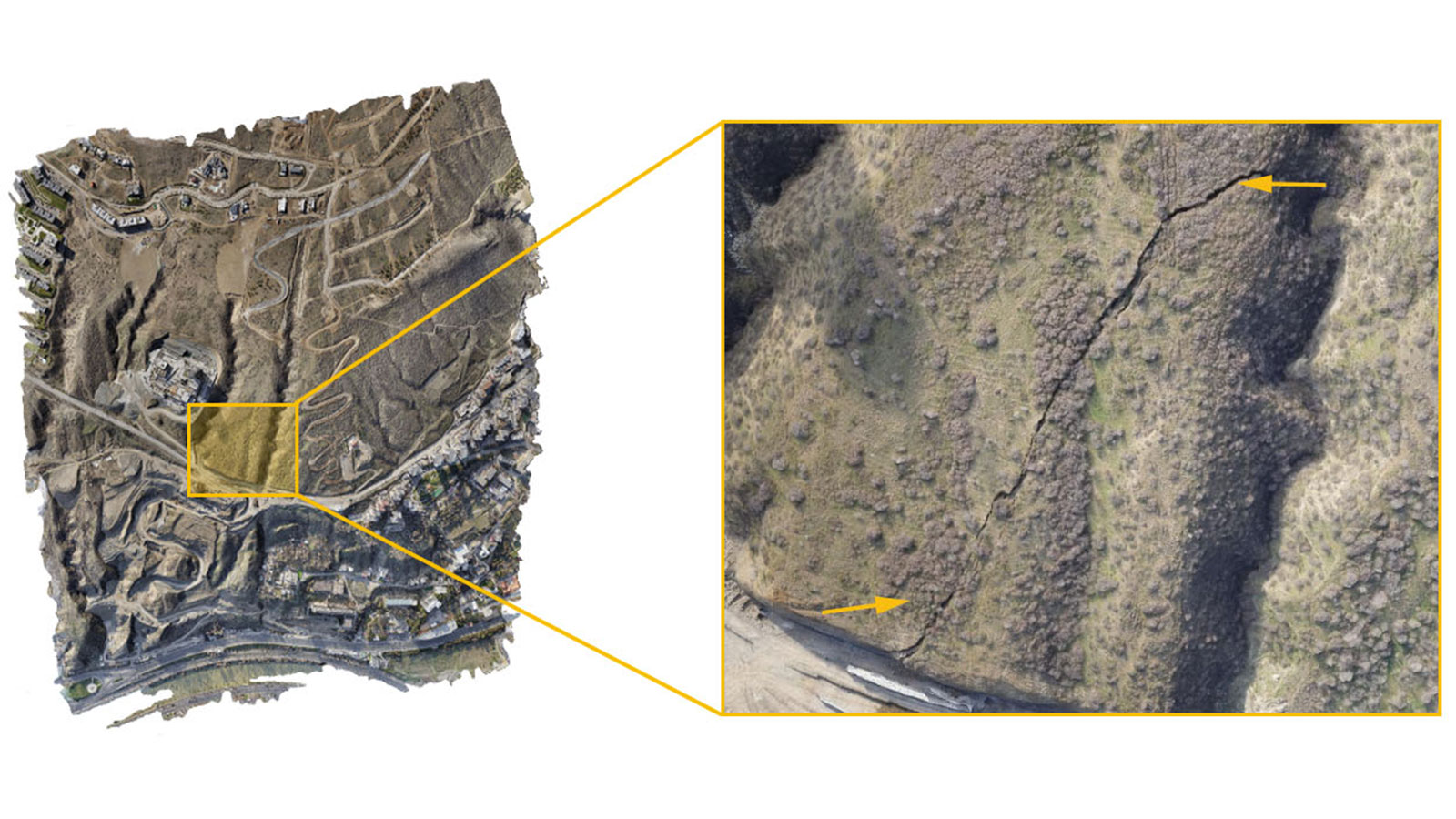
PIX4Dmapper, meanwhile, empowers surveyors to measure from images. The software achieves a high degree of accuracy that can be enhanced with technology such as RTK or PPK. In this situation, the team needed volume measurements to assess the quantity of torn landmass, as well as predict where the slope could slide off so they could prepare for movement in proximity to the urban area. They started by measuring the size of the fissure, which was 14 meters long (45 feet).
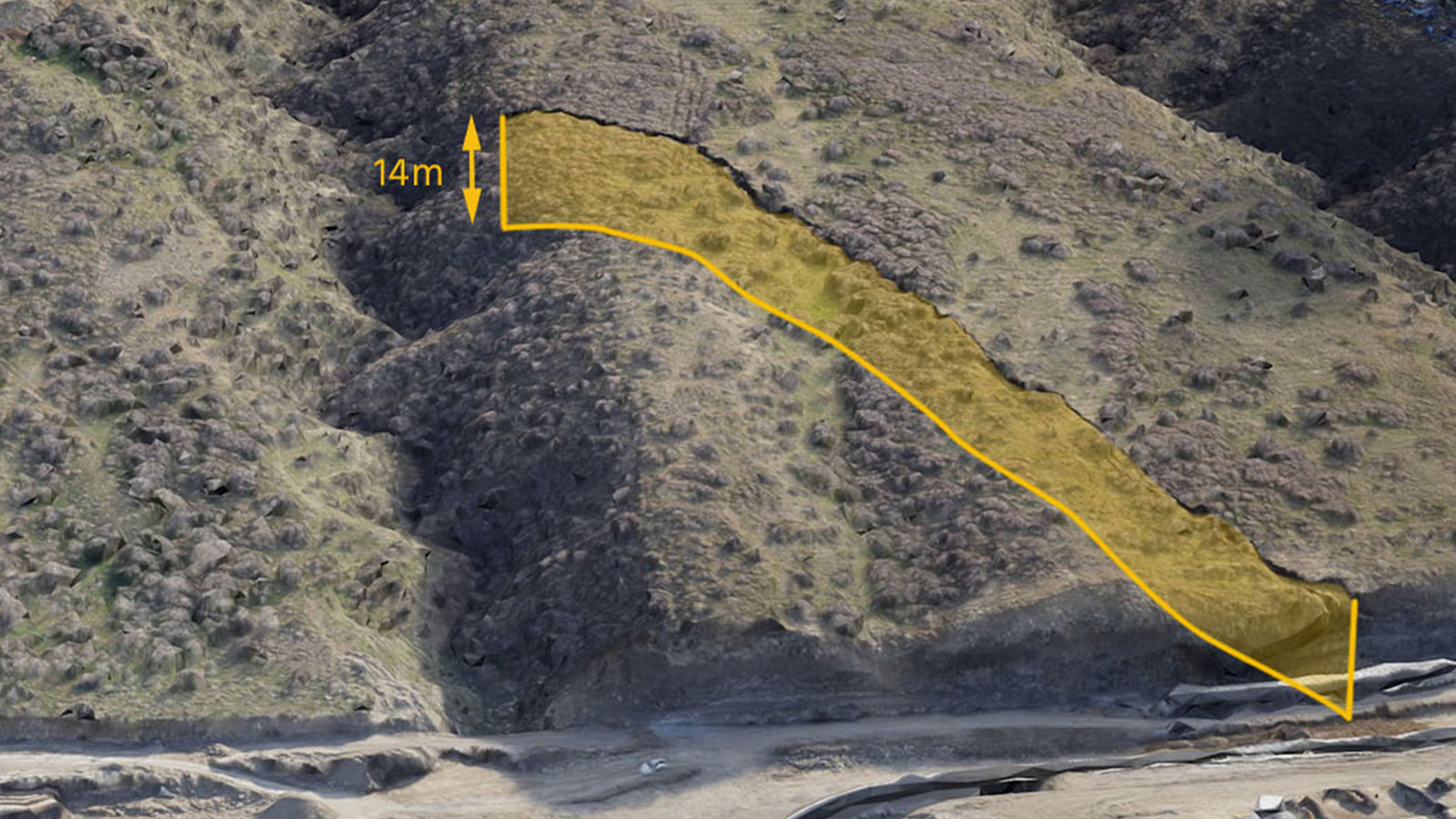
Mapping a landslide with drones
To assess the area, the team set out with the eBee X drone and used RTK to ensure they had geolocational accuracy. It took two flights to analyze movement as well as measure the volume of land being displaced. To ground the RTK measurements the team had 4 checkpoints that had an overall RMS error of 1.6cm (0.5 inches). It totaled 500,000 cubic meters across 2.5 square kilometers. They gathered over 800 images across these flights which they imported to PIX4Dmapper.
In PIX4Dmapper, the terrain was analyzed by specialists from the team. They first generated a Digital Surface Model (DSM) of the area to check the profile of the land. They knew they could trust their results thanks to the specifications of the drone and software. The DSM enabled a detailed evaluation of the slope and morphological features. The team studied several factors, including:
- Depth
- Volume
- The curvature of the fissure
- Potential movement of the landslide
- Predicted velocity and flow accumulation
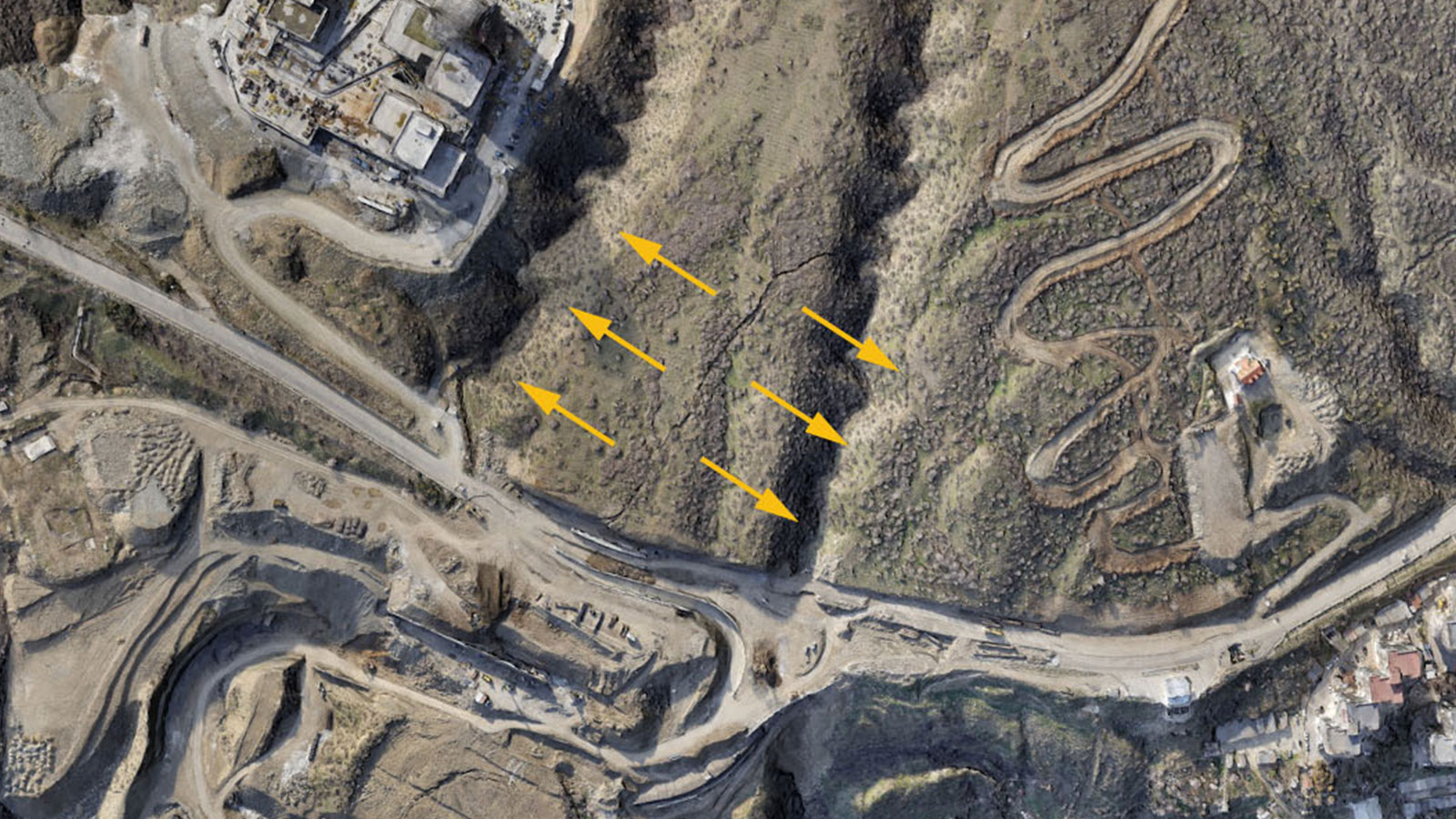
An aerial public safety response
The detailed analysis completed by the surveying team was possible thanks to using drones to gather data and keep staff safe. The stabilizing measures could then be put in place by the government thanks to using the DSM as an actionable resource.
“When you have to be accurate, you choose the best possible way to achieve high-quality datasets” - Vitali Machavariani, Georgia National Environmental Agency
The combined use of the senseFly eBee X and the DSM from PIX4Dmapper provided the team with tools to solve a problem. In August of 2021, according to the Tbilisi City Hall, the protective measures taken against the landslide site meant it had been stabilized. Geospatial hazard tracking is a difficult task - but with drones it can be easier, accurate, and effective.
